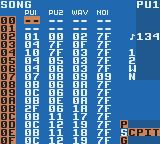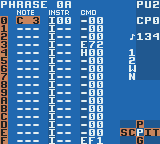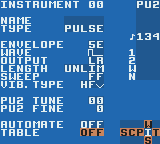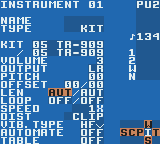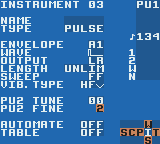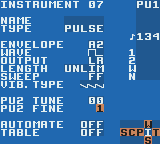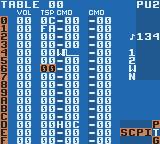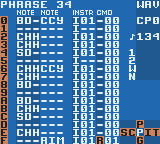Gameboy på svenska
November 24th, 2007Jag råkade snubbla över ett svenskt Gameboy-forum, som också har ambitionen att vara en speldatabas, med recensioner. Jag vet inte hur bra de har lyckats hittills, men sidan verkar trevlig, och jag rekommenderar ett besök för dem som är intresserade.
(Tack Småm. Du hjälpte mig hitta sidan utan att ens veta om det. ![]() )
)
Lemon Gameboy Music Tracker
October 31st, 2007As you may or may not now, I actively check my referrers to see where people come from, and what they searched for when they ended up at my blog. Sometimes I find really interesting things, and this is one of them.
Someone from Czech (Hello ![]() ) searched for lemon tracker gameboy. This tool has totally passed me by. It is appearantly a tracker without its own sequencer. Instead, it converts modules made with FT2 to its own format. I have still to check it out, but it seems to be a decent player that was abandoned before it was done, and no sources exist for LMP 2, as far as I can find. And no good contact info either. (Edit: I found a way now)
) searched for lemon tracker gameboy. This tool has totally passed me by. It is appearantly a tracker without its own sequencer. Instead, it converts modules made with FT2 to its own format. I have still to check it out, but it seems to be a decent player that was abandoned before it was done, and no sources exist for LMP 2, as far as I can find. And no good contact info either. (Edit: I found a way now)
If the person searching for it sees this, a mirror of his site is available here: http://members.fortunecity.com/lemon26/. (Including source code for LMP 1 and a demo of LMP 2)
I’m actually considering disassembling the LMP2 demo and extract and maybe improve the player engine, if I get the time to it. I’m convinced I can do it with some time and effort, but if I’m going to give it a try, I want at least one person to say they want me to do it. I’m also contacting Gilles (Lemon) about this, and I’ll see if he’ll answer.
Akiba-kei (Song preview)
September 21st, 2007Please excuse the background noise. Something went havoc with my sound card, and the noise was all over. I’ll re-record once I get it sorted out.
Other than that, this is a tune produced in less than 24 hours, which is uncommon for me. (Usually takes months from start to finish, if I ever finish it)
I’ll probably release the sav for this one, once I’ve ploished it a bit.
I’m on Facebook!
August 12th, 2007I can’t say I didn’t hesitate, but after a while I felt I had to see what the fuzz is about. So now I’ve joined Facebook. I tried to be careful about only adding people who would recognize me, and I didn’t turn on “spam mode”. I will not preach about what’s so good with FB. (Frankly, I’m not even sure myself yet) If you’re in it, fine, otherwise, fine too.
However, I decided to give it a serious, and today I also created a group, the Gameboy Musicians group. If you’re on Facebook, and you’re a Gameboy musician, join it, whynot?
Until next time, good bye and have a nice day!
Noise Vinyl arrived today!
July 24th, 2007As I’ve mentioned before, I submitted a loop to the Noise Vinyl project. The disc is a so calles locked groove disc, in other words a disc with a number of loops going forever, rather than a continuous track with a beginning and an end. The noise vinyl project is a community project where several artists contribute. My contribution is Gameboy loop, not surprisingly.
Today my vinyls finally arrrived, after a little fuck-up where my friend who helped me with paypal used an old home address of his. The package floated around in Linköping for a few weeks before going back to USA for a final trip to me.
Their vinyls come in tasty colors. I got two red ones, one orange and one black. I imagine there are yet other colors too.
The Noise Vinyl v3 is for sale to the public now!
Here are some pics:
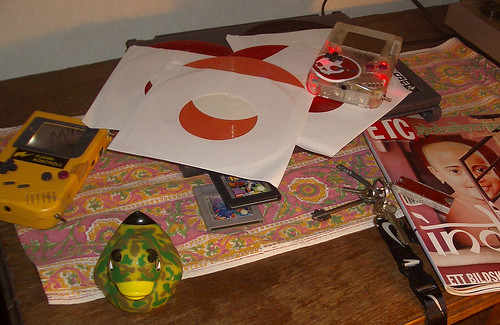
My noise records and a few other random items. Me staging a photo?? Nooononono!

The red hot record playing my loop

The rubber duck “Kommandotolken” (The wF mascot) and my Skullcandy headphones.
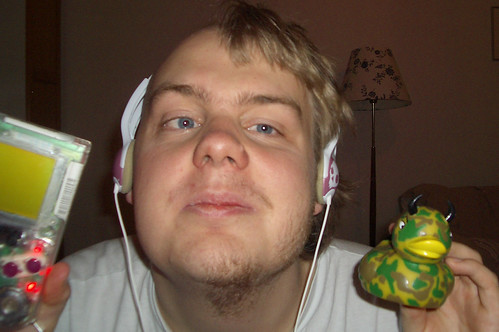
Here we have me, mr rubber duck again, and my precious Redboy!
Gameboy Music How-to published
July 23rd, 2007I just published a page called Gameboy Music How-to. It’s a guide for people wishing to get started with Gameboy music, and hopefully there’s some useful informatiom even for those who have been in the business for a while. In a while I’ll be adding some links to LSDj tutorials and other good stuff.
An actual circuit bent Gameboy (?) and some Lego
June 28th, 2007I’m actively checking my search engine referrers, so I know what people were looking for when they got here. I’ll do also do a more complete post about this, Syd Lexia style.
One of the more popular keywords for people finding their way here, are Gameboy circuit bending. (And related terms) This is what I believe to be the first actual circuit bent Gameboy I’ve come across. (Found by accident on youtube) I’m not totally sure if the guts are actually from a Gameboy though.
This might also be of interest: A bent Casio SK-8 with a breakout box made of a GB case. Done by the pro-bender Kaseo.
And also another little thing I found by accident: A Gameboy built in Lego. (Although it looks like a prop, it looks damn nice)
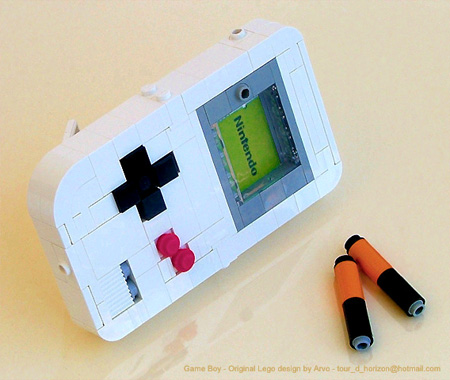
Found at Brickshelf.
The source lsdsong file for camvliez
June 19th, 2007After two specific requests to release this song (From skrebbel and Bud Melvin) and one general plead for more open sav’s from neutral_insomniac, I decided to finally release the source file for Camvliez. (Click the name to see the original post where you can also listen to the tune as an MP3)
Click here for the LSDSong source for the tune
This post should also be seen as a sort of LSDj tutorial, and if you find it useful, please don’t hesitate to leave a comment or link to the post.
If you’re a beginner, who don’t know how to get started with LSDj, please do check out this comprehensive tutorial by starpause and this one by
nullsleep.
Here are some advice and facts that might be useful:
- The song is composed with Little Sound Dj v 3.1.9 and should ideally be played back with the same version to avoid incompatibilities. (However, I don’t see much in this one that could wrong on other versions)
- When I first uploaded the file to my PC, I got a weird bug in chains like 05 and 06 (Where ever there were C commands) where the sound changed properties when the pointer reached the end of a phrase, and the note was still playing. I found out that this bug was caused by some sort of “shadow notes” on the step 0 in the phrase. B+A (LSDj command for cut/delete) on that position reset the note and made the bug go away.
- Camvliez is really an unfinished song, and some time I will finish it for real. (Some people including myself think that it ends to abruptly) But, there also a hidden unfinished tune in there. I got some ideas while looking through the sav a last time, so I just put them there. If anyone wants to finish remix that, please do so!
- Use the clone command! By first copying a chain or phrase to a new position, and then pressing select+{B, A} (Hold select while pressing B then A) This is my usual method of applying small variations to songs made in LSDj.
- The MP3 version of the song was recorded on a cheap-o soundcard from redledboy, using a regular audio cable. (No fancy 192 kHz, 32-bit fireqire audiocard here…) The sound was touched up in Audacity using the builtin bass boost, then Audacity’s compressor with its default settings, then I gave the file a boost at maybe 4-7 kHz (Don’t remember) It could sound better, but to me it’s acceptable.
Overview of the song.
I’m using a 7/5 groove, aka shuffle, which in effect means that the first note in a phrase is a little longer than usual, and the next one is a little shorter, next one is longer, next one is shorter, etc. This gives a shufffle effect similar to the one the TR and TB series of machines by Roland.
My advice to people using grooves is to keep the sum of the groove 12. (Or 24 if using two groups etc) If you don’t, the BPM will be inaccurate, and song will be harder to sync to each other over link cable.
This is a phrase that uses so called “pattern break”, meaning that when you reach the H00 command, the phrase will end after 4 steps, which I use for a short break thing with a rising square wave.
There we have the said rising square wave. Look at the envelope parameter. 5 is the starting volume, and E is the fade direction, E means “rise slowly”.
As you can see it has no name, which is a bad habit of mine. You should name them.
Here we have the main drum instrument. Not much to say about it. It uses the 909 kit for both its software channels. Apart from that nothing is changed from the default settings.
And again, name your instruments boys and girls!
Here’s my bassline. Bud Melvin asked about it, so here the trick. Instrument 03 is 1/8 (12.5%) pulse width square wave to give some crisp to the sound, and 07 is a 1/2 (50%) wave with a tod longer decay. This gives what according to me is a pretty nice bass line.
Also please note the vibrato setting. It’s not HF as usual, but a regular vibrato type. This affects not only vibrato, but also makes legato and pitch slide (L and P commands) slower. This allows me to do a nice lick thing with the instrument. (Check out song position 31, chain 29, phrase 42, phrase positions A-B) The PFF/P01 combo makes the pitch first go down a little, then back up again.
I actually got a ompliment on that effect, that’s why I decided to mention it. I never thought anyone would notice, but it seems like it pays off to add small details to your music.
This is a table that makes a pretty nice effect. (Used in instrument 08) 0C on the first step quickly rises the tone one octave over the played note, FA lowers it 6 semi-tones below the played note. (I actually meant it to be lowered 7 semis, making end up at the subdominant of the played note, but it sounds good this way too)
A few ticks later, I change the wave form from 1/4 (25%, as set in the instrument) to 1/8. (12.5%) This adds to the snappy character of the sound.
The H (hop) command means something else in tables than it does in phrases. As shown before, it makes a pattern break in a phrase. In a table, the H command hops within the table instead. The rightmost digit defines the target position, the leftmost one defines the number of times the loop should loop. (0=Infinitely) The H0C command here simply catches the cursor in an infinite loop, so that it won’t apply the snap effect continually.
Here are some kit drums played on the WAV channel. I’ve put a lot of work in to gradual progression in the drums, which hopefully makes the music more interesting. (As mentioned above, use the clone command!) Also, it’s worth noticing the R (Retrig) command. It gives a quick drum roll there at the end. (But you might need to watch out if you place an empty phrase after it, since the retrig continues)
As said before, if you find this info useful, please leave a comment. ![]()
Camvliez (Gameboy tune)
May 30th, 2007New tune in the making. There a few things that need to be polished, but it’s almost completed. There’s not much to say about it. I decided was told to make a tune, and so I did. The result is a pretty funky thing with a lot of small variation.
Listen:
(Edit, December 1, 2007: Fixed the the player)
A whole PC in a DMG case
May 10th, 2007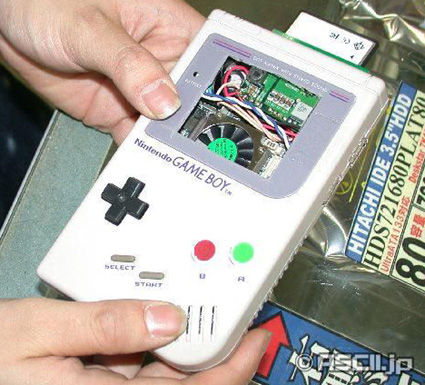
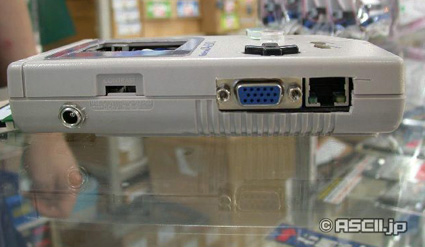
I was hesitating to post about this thing. After all this guy is butching an innocent Gameboy to do this thing. But on the other hand it’s a cool thing, and honestly one that I’d like to own. (Although it’s not as cool as the NES mini, a whole NES, fitted into the size of a NES controller)
Also the activity LEDs in different colors reminded me of my own yellowboy with one red and on black button.
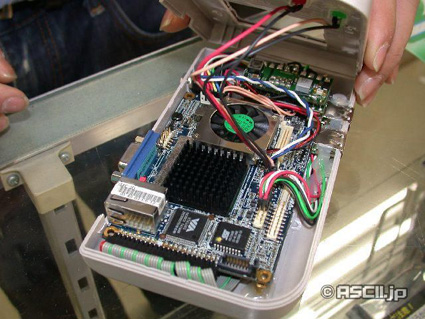
The miniature PC is based on the Via EPIA PX10000G motherboard, a board of the Pico-ITX standard. Even though the small size, it houses connections for VGA, as well as USB and ethernet. One of the USB ports is placed in a very good spot: Where the link port used to be. People often ask me about my classic Gameboys if that port is for firewire (!) They never saw that port on their own GB’s, appearantly because it’s usually covered with a piece of plastic to protect the machine from dust.
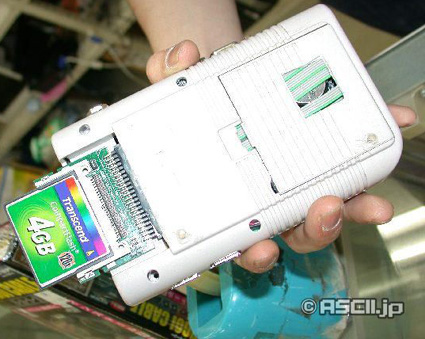
The PC lacks a hard drive, and uses CF cards for storage instead. CF uses the same or almost the same interface as IDE, as far as I know, meaning that you could probably attach IDE drives to it with a little tinkering.
In its current shape, the CF card appearantly stores the OS. The guy is using Windows XP embedded for the purpose, but I’d like to try some flavor of Linux, or possibly Lunix. (No, I’m not serious, I just like to drop that link)
Story chain: Engadget » Plastic Bamboo » Japanese original page
So a little report about the 09 F9 11 02 9D 74 E3 5B D8 41 56 C5 63 56 88 C0 business. At the moment, it’s at 1720000 results, closing in to two millions. Also, digg has decided not moderate articles and comments containing the code. (Which I didn’t discover until today, more than a week too late) And here’s an article about a novel way of expressing the digits, with all the implications involved.
“Takedown This!”
That’s all for today. I’m Joanne and this is Ro… Wait, not really.
Also, 58.70.6.xx-san from Japan (Later using the IP 60.56.165.xx) Please leave a comment! I see that you have reloaded my page a lot or something. I also see that you are an Opera user, just like me. Reveal yourself!
![You suck at protoshop. No, you [i]really[/i] oo.](http://blog.gg8.se/images/you-suck-at-photoshop-you-really-do-your-awful.png)



